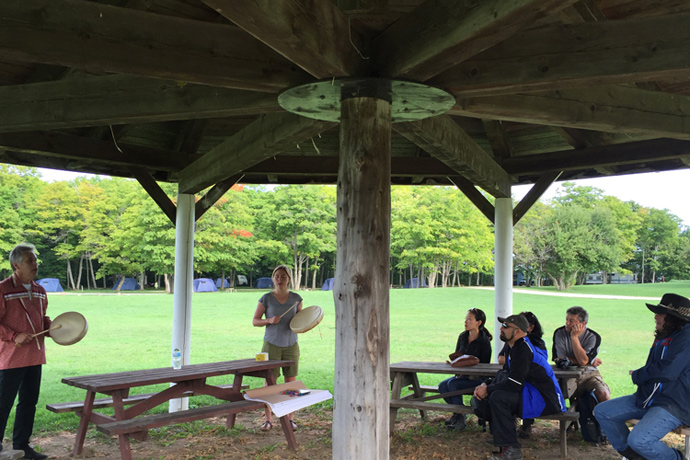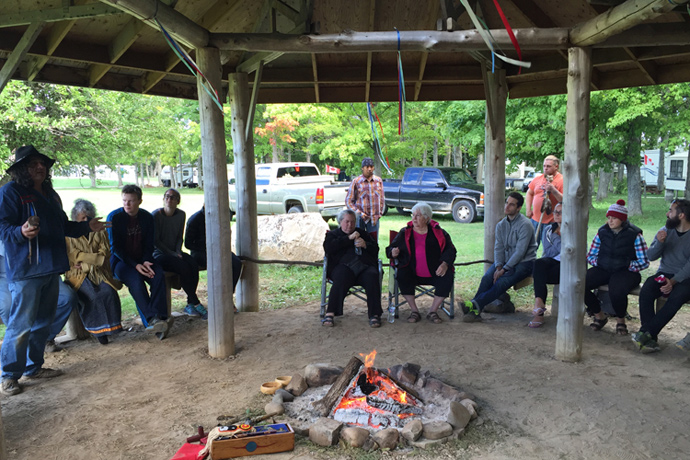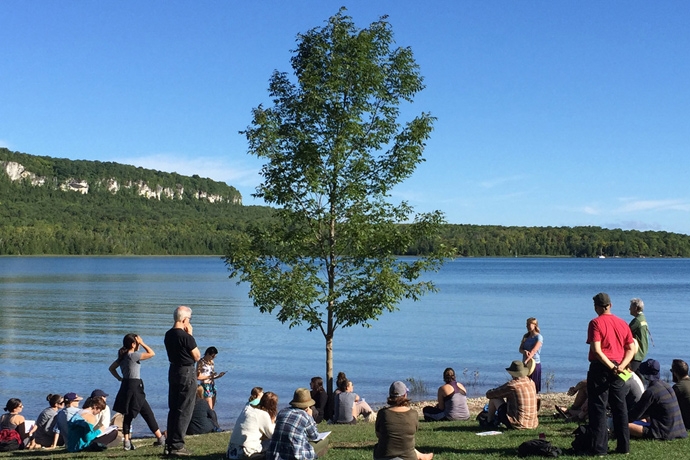Learning about water laws sitting next to Georgian Bay and about plant laws by walking through a forest
By Noreen Ahmed-Ullah
For years, Canadians studying Indigenous law have learned about treaties and case studies, sitting in a classroom and approaching the subject from a largely colonial perspective.
A new U of T law course offered earlier this month introduced law students to Indigenous law from a land-based perspective, meaning the classroom moved outdoors to Cape Croker Indian Reserve on Georgian Bay, where students learned from elders and chiefs about traditional laws.
Twenty students learned Anishinaabe law and legal tradition by on-site reference to treaties and stories about how to interact with the water, rocks, plants and animals.
“The idea behind the course is that in order to fully understand some of the concepts of Anishinaabe law and legal traditions, you must be on the land and interact with the land,” said Alexis Archbold, assistant dean of the JD program at U of T Law.
“I think law schools have done a good job teaching how the Canadian law has been applied to First Nations, Inuit and Métis people but a fair critique is that these courses do not adequately include Indigenous perspectives. In Canada, we have civil law, the Common Law tradition and Indigenous law which existed well before the civil code and Common Law came around. As Canadians, we need to keep all three traditions in mind when we’re thinking about the laws of this country.”

U of T Law considered starting the program after Professor John Borrows, who teaches similar courses on the topic at University of Victoria and Osgoode Law School, approached the university—but this time offered to teach the class for credit. He worked with Associate Dean Kerry Rittich to make the course more academically rigorous.
It took place Sept. 8-11 in Borrows’s own reserve, Neyaashiinigmiing, on the Bruce Peninsula in present-day southern Ontario. Borrows is Anishinaabe and many of his family still reside in the Cape Croker community.
Alexis Giannelia, a second-year law student, became interested in studying Indigenous law in first year when her property law professor put a big emphasis on Aboriginal title and the history of issues like residential schools and treaty making. Giannelia, who is not Indigenous, took Borrows’s course at the University of Victoria in May, and he suggested she take this course at U of T.
“I want to practice Aboriginal law, but having a knowledge of Indigenous law is very important,” Giannelia said. “Aboriginal law is Canadian law as it applies to Aboriginal peoples. But Indigenous law on the other hand is the laws of the Indigenous peoples. Having an understanding of Indigenous law helps you have a greater understanding of the Indigenous experience and how Indigenous issues manifest themselves.”
The course consisted of lectures taught by Borrows in the outdoors – learning about water laws sitting next to Georgian Bay and about plant laws by walking through a forest. Along with speaking to elders, the class also participated in ceremonies.
“Ceremony cannot adequately be experienced in a classroom,” said Giannelia. “The entire time there was a sacred fire that stayed lit 24 hours a day. Two fire keepers maintained the fire all day and night. That’s a concrete example of sacred law that you cannot experience in a classroom.”




